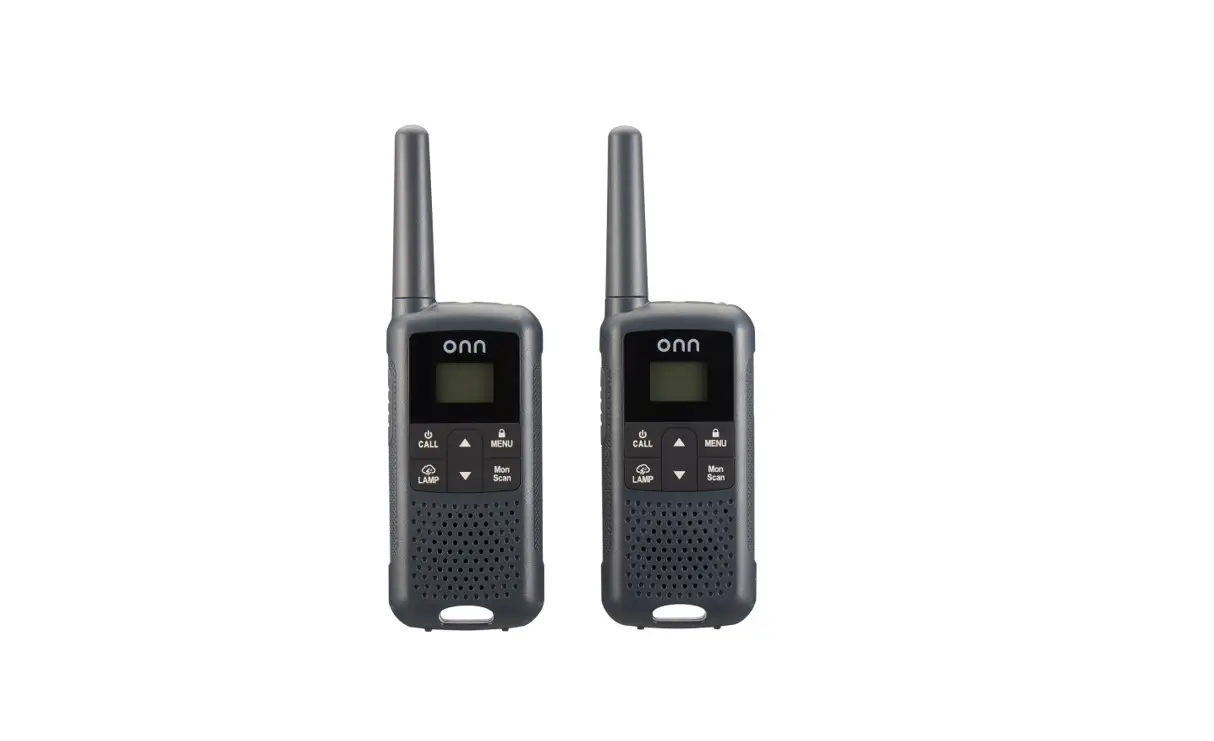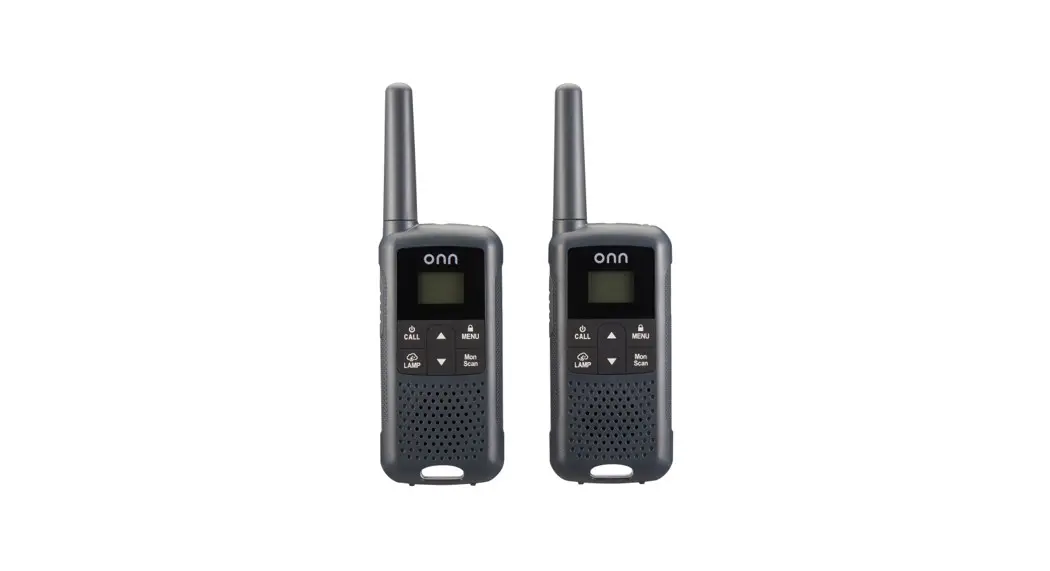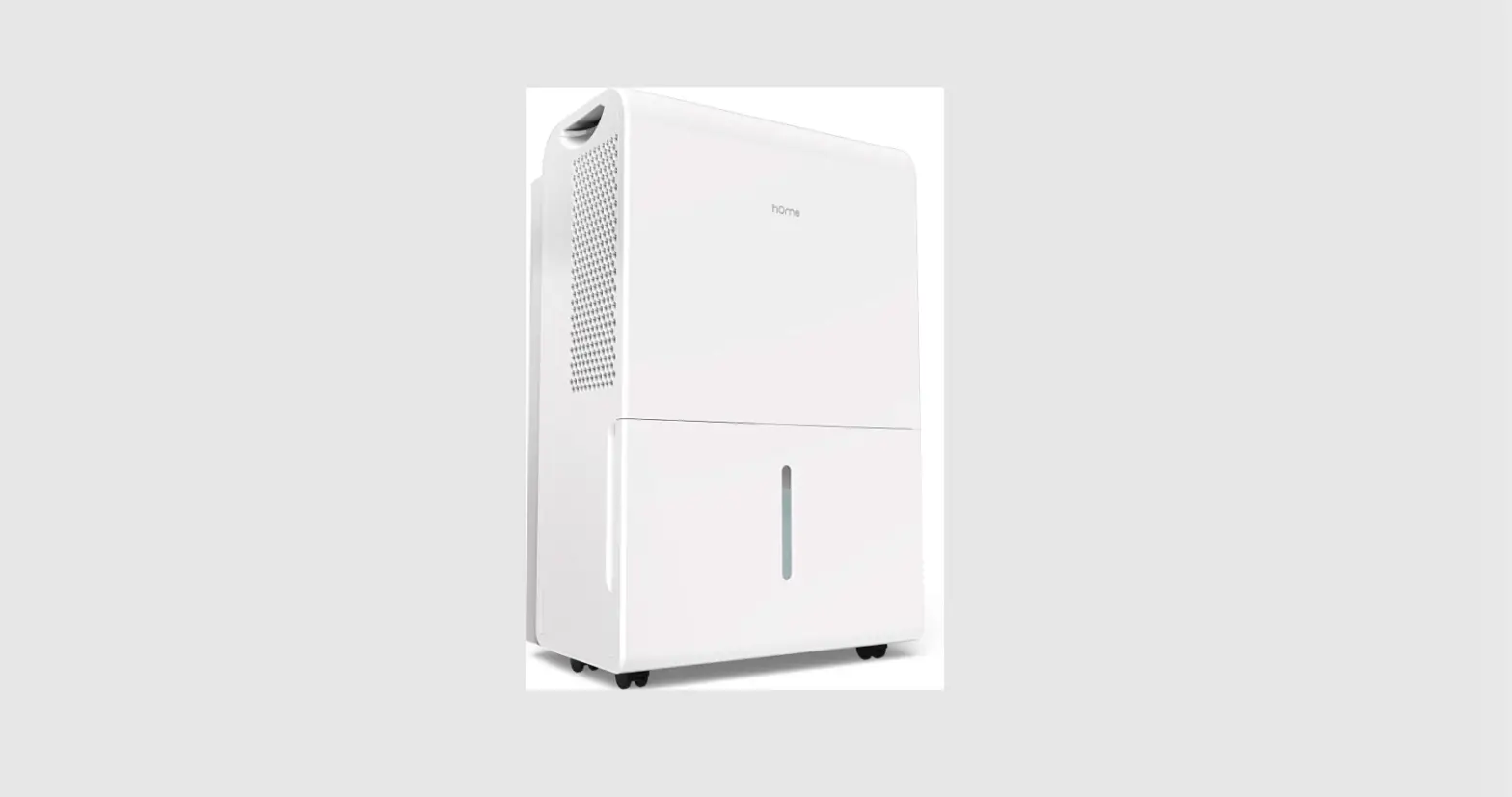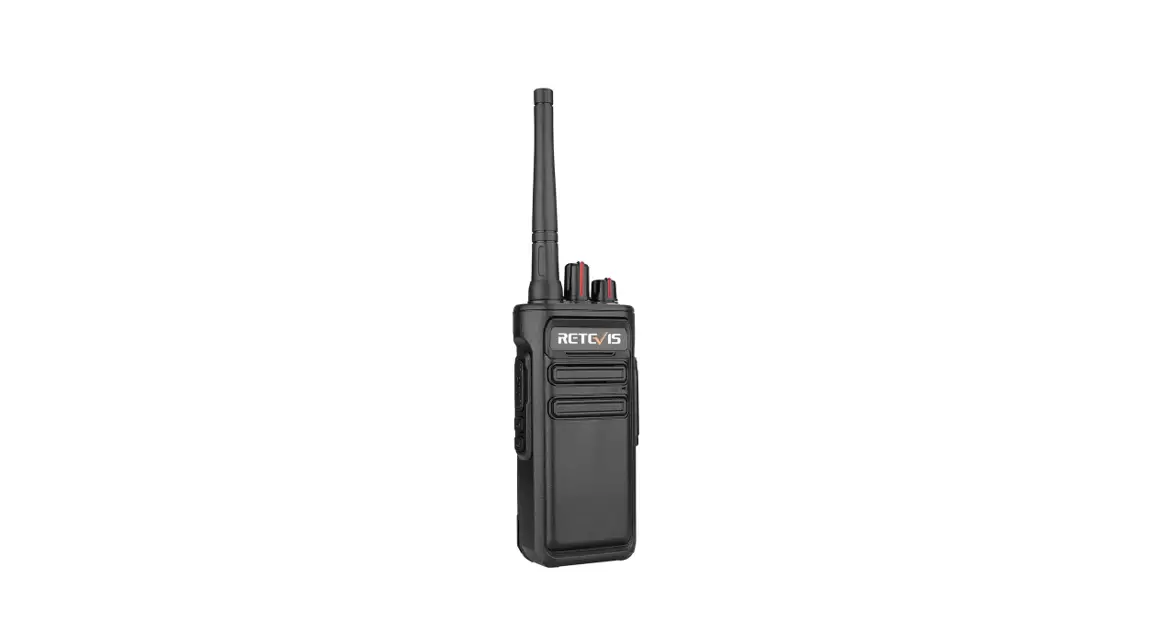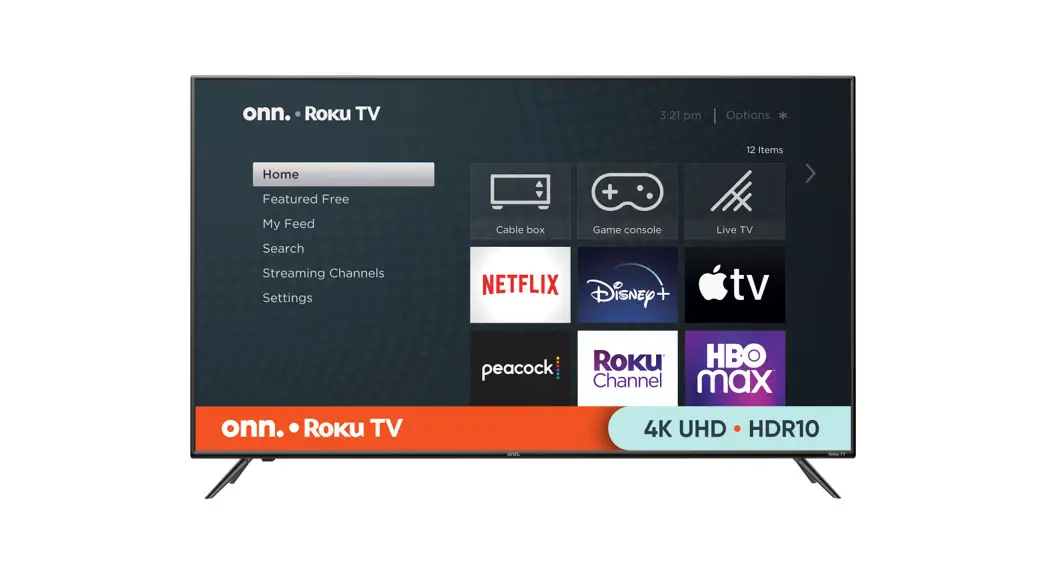 100068732 16 Mile 22 Channel Walkie Talkie
100068732 16 Mile 22 Channel Walkie Talkie
User Guide

DISPLAY SCREEN GUIDE

GETTING STARTED
Installing the Three AA NiMH Rechargeable Battery pressing and holding or for 3 seconds. You may remove more than one channel in this way.
- Take the belt clip off.
- With the back of the radio facing you, lift the battery cover latch-up and remove the cover.

- Insert the three AA NiMH battery with + and – polarity as shown inside.

- Close the battery cover firmly.

Radio Battery Meter
The number of bars (![]() ) on the radio battery icon shown indicates the charge remaining in the battery. When the radio battery meter shows one segment,the radio chirps periodically (Low Battery Alert). In battery low status, the radio will sound the alert every 10 minutes or after releasing the PTT button. 3. Press the PTT button to set and exit the menu.
) on the radio battery icon shown indicates the charge remaining in the battery. When the radio battery meter shows one segment,the radio chirps periodically (Low Battery Alert). In battery low status, the radio will sound the alert every 10 minutes or after releasing the PTT button. 3. Press the PTT button to set and exit the menu.
Note: Remove the battery from the radio for storage purposes.
Removing the Three AA NiMH Rechargeable Battery
- Turn the radio off.
- With the back of the radio facing you, lift the battery cover latch-up and remove the cover.
- Close the battery cover firmly.
Note:
- Be careful when removing NiMH batteries. Do not use sharp or conductive tools to remove either of these batteries.
- Remove the batteries before storing your radio for extended periods of time. Batteries corrode over time and may cause permanent damage to your radio.
- Do not mix old and new batteries and Do not mix alkaline, standard (carbon-zinc) or rechargeable (ni -cad, ni -mh, etc.) batteries.
Battery Capacity Maintenance
- Charge the NiMH batteries once every3 month when not in use.
- Before placing the radio in storage, remove the battery.
- Store the NiMH batteries in temperature between – 20 ℃ to 35 ℃ and in low humidity. Avoid damp conditions and corrosive materials.
Using the Micro-USB Charger
The micro – USB charger is a handy port that allows you to conveniently charge your NiMH battery. Use a certified adaptor (5V,≥1A). Do not attempt to charge alkaline batteries.
- Make sure your radio is turned OFF.
- Plug the micro – USB cable into the micro –USB charging port on your radio. Connect the other end of the micro –USB charger to a wall power outlet.
- The battery meter on LCD will move to indicate the battery is Charging.
Note:
- It is recommended to power your radio while charging.
- When moving between hot and cold temperatures, do not charge the NiMH batteries until the battery temperature acclimates (usually about 20 minutes).
- For optimal battery life, remove the radio from the charger within 16 hours. Do not store the radio while connected to the charger.
Turning your Radio On and Off
- Press and hold on to the
 button to turn your radio ON/OFF. In the ON position, the radio chirps and briefly shows all feature icons available on the radio.
button to turn your radio ON/OFF. In the ON position, the radio chirps and briefly shows all feature icons available on the radio. - The display screen then shows the current channel, code, and all features that are enabled. The radio is in Two – Way mode.
Setting the Volume
Press and hold the![]() button for three seconds to listen to the volume level.
button for three seconds to listen to the volume level.
- First press either
 or
or to trigger volume change. You will see the current volume level on the screen.
to trigger volume change. You will see the current volume level on the screen. - Press
 to
to increase the volume. Press
increase the volume. Press to decreases the volume.
to decreases the volume. - When the volume reached level 0 the mute
 icon appears permanently on the screen.
icon appears permanently on the screen.
Do not hold the radio close to your ear. If the volume is set to an uncomfortable level, it could hurt your ear.
TALKING AND LISTENING
To communicate, all radios in your group must be set to the same channel and Interference Eliminator Code.
- To talk, press and hold the PTT button. When transmitting, the
 icon is shown .
icon is shown . - When you are finished talking, release the PTT button.
- When receiving, theta. the
 icon is shown.
icon is shown.
For maximum clarity, h61d the radio 2 to 3 centimeters away from your mouth and speak directly into the microphone. Do not cover the microphone while talking.
Talk Range
Your radio is designed to maximize performance and improve transmission range. Do not use radios closer than five feet apart.
Monitor-Button
Press and hold ![]() the button for 3 seconds to enter monitor mode and listen for weak signals on the current channel .
the button for 3 seconds to enter monitor mode and listen for weak signals on the current channel .
You can also listen to the volume level of the radio when you are not receiving it. This allows you to adjust the volume, if necessary. You can also press a![]() button to check for activity on the current channel before you talk.
button to check for activity on the current channel before you talk.
Push-to-Talk Timeout Timer
To prevent accidental transmissions and save battery life, the radio will stop transmitting if you press the PTT button for 60 seconds continuously.
Mode Button
Press and hold![]() the button for 3 seconds, the user will be seamlessly switching between two-way and weather mode.
the button for 3 seconds, the user will be seamlessly switching between two-way and weather mode.
Selecting the Channel
The channel is the frequency of the radio uses to transmit.
- Press
 the button until the channel number starts to flash.
the button until the channel number starts to flash. - Press
 orObutton to change the channel number.
orObutton to change the channel number. - Press the PTT button to exit the menu or
 button to continue setup.
button to continue setup.
Selecting the Interference Eliminator Code
Sub-Codes help minimize interference by blocking transmission from unknown sources. Your radio has 121 Sub-Codes. To set the code for a channel:
- Press the
 button until the code number starts to flash.
button until the code number starts to flash. - Press
 or
or the button to select code number.
the button to select code number. - Press the PTT button to exit the menu or
 the button to continue setup.
the button to continue setup.
Setting and Transmitting Call Tones
Your radio can transmit different call tones to other radios in your group when you pressed a button. The radio has 10 call tones. To set a call tone:
- Press
 the button until call tone ‘CA’ appears. The current call is tone-setting flash.
the button until call tone ‘CA’ appears. The current call is tone-setting flash. - Press
 or
or button to change and listen to the call tone.
button to change and listen to the call tone. - Press the PTT button to exit the menu or
 the button to continue setup.
the button to continue setup.
Voice Operated Transmission (VOX)
Transmission is initiated by speaking into the microphone of the radio instead of pushing the PTT button.
- To activate VOX, press
 the button until ‘VOX’ appears on the display. The current setting (0,1-3) will flash.
the button until ‘VOX’ appears on the display. The current setting (0,1-3) will flash. - Press
 or
or  button to select the sensitivity level.
button to select the sensitivity level. - Press the PTT button to exit the menu.
| L3=High Sensitivity for quiet environments |
| L2=Medium Sensitivity for most environments |
| L1=Low Sensitivity for noisy environments |
| L0=Turn Off VOX function |
Dual-Channel Monitor
Enable you to scan the current channel and another channel alternately.
To set another channel and start Dual Watch.
- Press
 the button until ‘2CH’ appears on the display. The current setting (OF,1-22) will flash.
the button until ‘2CH’ appears on the display. The current setting (OF,1-22) will flash. - Press
 or
or  select channels.
select channels. - Press the PTT button to exit the menu or
 the button to continue the setup.
the button to continue the setup. - Press the PTT button or wait until the time-out menu to activate Dual Watch. The screen will alternate between Home Channel and Dual Watch Channel.
To end Dual Watch mode, re-enter the Dual Watch menu to select the OFF setting.
Note: If you set the same channel and code as a current channel, Dual Watch does not work.
SPECIAL FEATURES
Keypad Tones
Your radio emits a beep each time one of the buttons is pressed (except the PTT and ![]() button)
button)
Press and hold the![]() button while turning the radio ON to switch the CALL keypad tone ON/OFF.
button while turning the radio ON to switch the CALL keypad tone ON/OFF.
Roger Tone
You can set your radio to transmit a unique tone when you finish transmitting.
Press and hold ![]() the button while turning the radio ON to turn the Roger Beep ON. Repeat the step to turn Roger Beep OFF.
the button while turning the radio ON to turn the Roger Beep ON. Repeat the step to turn Roger Beep OFF.
Keypad Lock
To avoid accidentally changing your radio settings:
- To lock the radio, press and hold
 button until the key lock indicator
button until the key lock indicator  icon on display appears.
icon on display appears. - To unlock the radio press and hold
 button until the key lock indicator
button until the key lock indicator  icon on display disappear.
icon on display disappear.
Scanning Channels
Use scan to search all channels for transmissions from unknown parties to find someone in your group who has accidentally changed channels or to quickly find unused channels for your own use.
To Start Scanning:
- Briefly press
 the button, the SCAN icon will appear in the display and the radio will begin to scroll through the channel and code combinations
the button, the SCAN icon will appear in the display and the radio will begin to scroll through the channel and code combinations - When the radio detects channel activity matching the channel and Mon Scan code combination, it stops scrolling and you hear the transmission.
- To respond and talk to the person transmitting, press the PTT button within 5 seconds after the end of the transmission.
- The radio will resume scrolling through the channels five seconds after the end of any received activity.
- To stop scanning, briefly press
 the button.
the button.
Scanning Notes:
- If you press the PTT button while the radio is scrolling through inactive channels, the transmission will be on the “ home channel ”. Scanning will resume 5 seconds after the end of your transmission.
You may press the button to stop scanning at any time.
button to stop scanning at any time. - If the radio stops on an undesired transmission, you may immediately resume the scan by briefly pressing
 or
or  button.
button. - If the radio repeatedly stops on an undesired transmission, you may temporarily remove that channel from the scan list by pressing and holding
 or
or  for 3 seconds. You may remove more than one channel in this way.
for 3 seconds. You may remove more than one channel in this way. - To restore the removed channel (s) to the scan list, turn the radio off and then turn back on, or exit and re-enter the scanning mode by pressing
 a button.
a button. - You cannot remove the home channel from the scan list.
LED Lamp
Your radio has a built –in-LED Lamp.
Briefly press ![]() the button once to ON the lamp, press again to of the lamp.
the button once to ON the lamp, press again to of the lamp.
Automatic Power Save
For better battery life, your radio is designed to switch to Power Save mode when it has been no transmissions after 5 seconds. The radio can receive transmissions in this mode.
WEATHER RECEIVE
Weather feature is available designed for use in USA and Canada. Your radio can tune in to broadcasts by the United States National Oceanic and Atmospheric Administration (NOAA) Weather Radio and Environment Canada Weather Radio.
You can listen to a weather channel (see “Weather Channels and Frequencies” table for details). When you listen to a weather channel, you cannot use your radio in scan mode or for two-way communications.
Both NOAA and Environment Canada have transmitters located throughout the United States and Canada, respectively. These transmitters broadcast watches, forecasts and other information 24 hours a day.
Entering Weather Mode
From two-way mode, press and hold ![]() the button for 3 seconds to enter weather mode.
the button for 3 seconds to enter weather mode.
Setting the Weather Channel
Your radio receives weather frequencies:
- In weather mode, press
 the button until the weather channel number flashes.
the button until the weather channel number flashes. - Press
 or
or button to select the appropriate channel with good reception in your area.
button to select the appropriate channel with good reception in your area. - Press the PTT button to set and exit the menu.
Model 100068732
This FRS device is approved for the USAChannel Frequency
(MHz)
)Max power output Channel Frequency (MHz) ) Max Power Output 1 463. 1W 12 468. 0.5W 2 463. 1W 13 468. 0.5W 3 463. 1W 14 468. 0.5W 4 463. 1W 15 462.5500 1W 5 463. 1W 16 462.5750 1W 6 463. 1W 17 462.6000 1W 7 463. 1W 18 462.6250 1W 8 468. 0.5W 19 462.6250 1W 9 468. 0.5W 20 462.6750 1W 10 468. 0.5W 21 462.7000 1W 11 468. 0.5W 22 462.7250 1W
SAFETY AND GENERAL INFORMATION
RF Exposure and Product Safety Instructions for Portable Two-Way Radios General Populated and Uncontrolled Environments
Compliance with RF Exposure Standards
Your Two-Way radio complies with the following RF energy exposure standard and guidelines :
- United States Federal Communications Commission, Code of Federal Regulations; 47 CFR et seq. &FCC
- Institute Electrical and Electronics Engineers (IEEE) C95.1.
Transmit and Receive Procedure.
Your two-way radio contains a transmitter and a receiver. To control your exposure and ensure compliance with the general population /uncontrolled environment exposure limits, always adhere to the following procedure:
- Transmit no more than 50% of the time.
- To receive calls, release the PTT button.
- To transmit (talk), press the Push–to–Talk (PTT) button in front of the face.
- Hold the radio in a vertical position with the microphone (and other parts of the radio including the antenna ) at least one inch (2.5 centimeters) away from the nose or lips. Keeping the radio at a proper distance is important to ensure compliance.
Note: RF exposure decreases with increasing distance from the antenna.
Two–way Radio Operation
- Use only approved supplied or replacement antennas and audio accessories.
![]() WARNING: Changes or modifications to this unit not expressly approved by the party responsible for compliance could void the user’s authority to operate the equipment.
WARNING: Changes or modifications to this unit not expressly approved by the party responsible for compliance could void the user’s authority to operate the equipment.
Note: All controls, adjustments, and switches that are instructed in the manual or follow-up instruction provided by the manufacturer may be operated or adjusted without resulting in a violation of FCC rules
Warning: Any adjustment that could result in a violation of FCC rules and it’s recommended that could be performed only by or under the immediate supervision and responsibility of a person certified as technically qualified to perform transmitter maintenance and repair duties in this radio service by an organization or committee representative of users of that service.
CAUTION: Changes or modifications i.e. replacing any transmitter component (crystal, semiconductor, etc.) not expressly approved by the party responsible for compliance could void the user’s authority to operate the product.
FCC SAR Statement
This equipment complies with FCC radiation exposure limits set forth for an uncontrolled environment. End-user must follow the specific operating instructions for satisfying RF exposure compliance.
This transmitter must not be co-located or operating in conjunction with any other antenna or transmitter.
The portable device is designed to meet the requirements for exposure to radio waves established by the Federal Communications Commission (USA). These requirements set a SAR limit of 1.6 W/kg averaged over one gram of tissue. The highest SAR value reported under this standard during product certification for use when properly worn on the body and front of the face with a minimum distance of 25mm.
Need help? We’re here for you every day from 7 a.m.-9 p.m.
CST Give us a call at 1-888-516-2630
We’d love to hear from you. Scan with your Walmart app and let us know what you think.

Documents / Resources
 | onn 100068732 16 Mile 22 Channel Walkie Talkie [pdf] User Guide LWT002, 2APXNLWT002, 100068732 16 Mile 22 Channel Walkie Talkie, 100068732, 16 Mile 22 Channel Walkie Talkie |
